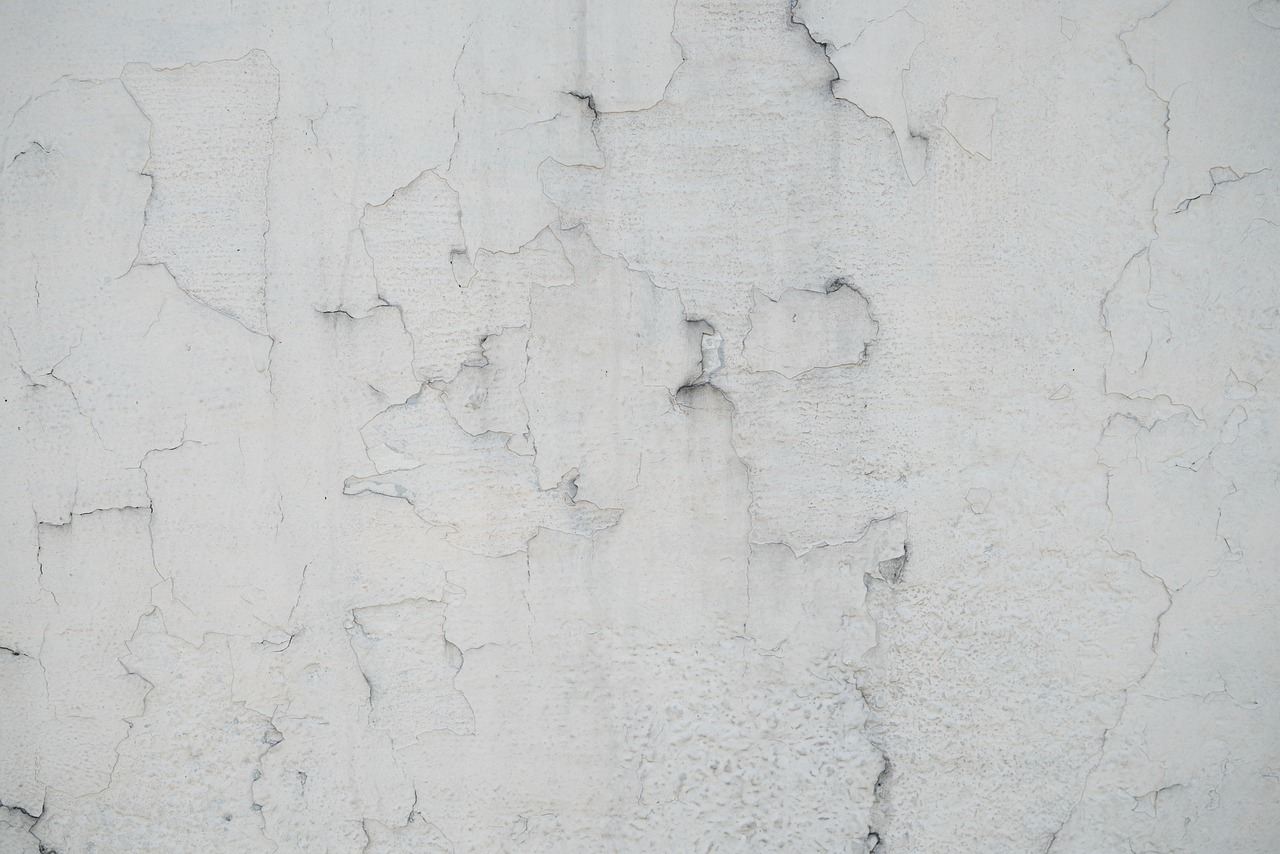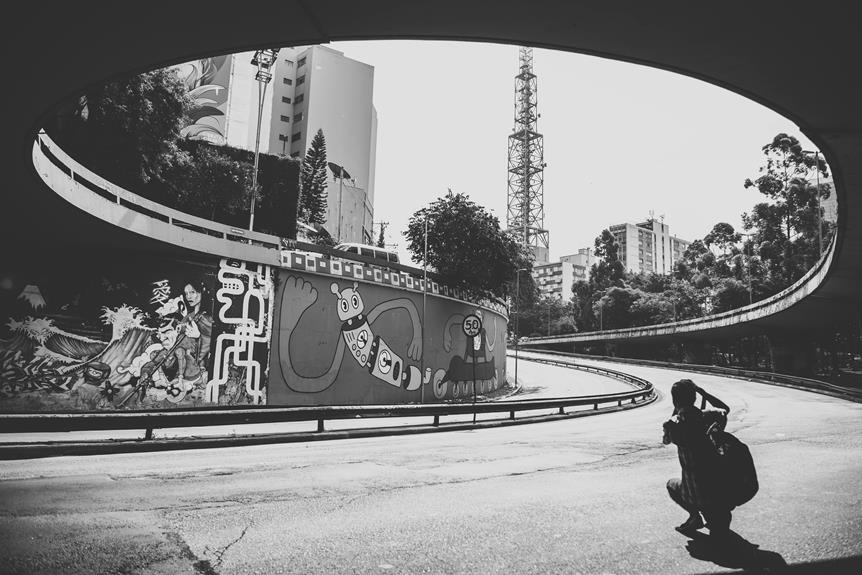Silhouette Art

Silhouette art captures your attention with its striking minimalism, transforming intricate forms into recognizable shapes. Originating from early cave paintings and Roman coins, it gained prominence in the 19th century thanks to its cost-effective nature. Artists like Loui Jover use this method to convey deep emotions, while modern techniques incorporate digital tools for precision. Essential in fields like fashion, architecture, and photography, silhouette art offers a unique blend of accessibility and sophistication. Understanding its evolution reveals a continuous thread of innovation and creativity, leading to new ways this timeless art form intersects with contemporary practices. Explore further to uncover more layers.
Key Points
- Silhouette art originated from early cave paintings and Greek minimalism, evolving into a popular 19th-century art form.
- It democratized portraiture before photography, offering a budget-friendly way to immortalize images.
- Techniques include precision cutting, digital tools, layering, and mixed media for unique designs.
- Modern applications span architecture, photography, fashion, and digital animation.
- Influential artists like Loui Jover and Marc Allante innovate silhouette art with emotional depth and vibrant colours.
Origins and Evolution
Tracing the roots of silhouette art reveals its fascinating evolution from ancient cave paintings and classical Greek and Roman art to a celebrated 19th-century portrait medium.
You can see early forms of silhouettes in cave paintings, where primitive artists captured the essence of their subjects through simple, shadow-like outlines.
Greek art also embraced this minimalist approach, focusing on the purity of form and shadow to convey depth and movement.
By examining these origins, you understand how early humans sought to distil complex figures into recognizable shapes.
This foundational simplicity paved the way for silhouettes to transform into an accessible and popular portrait medium in the 19th century, reflecting a continuous thread of artistic innovation and human expression.
Historical Significance
The historical significance of silhouettes lies in their ability to democratize portraiture, making personalized art accessible long before the advent of photography.
Silhouettes trace their ancient origins to Greek art, where profile portraits adorned pottery and Roman coins, showcasing their enduring popularity.
This budget-friendly portraiture method, popularized in the 18th century by Étienne de Silhouette, allowed people from all walks of life to capture their likeness inexpensively.
Unlike the elaborate and costly painted portraits of the Renaissance, silhouettes offered a simple yet effective way to immortalize one’s image.
The practice echoed Pliny the Elder’s and Butades of Corinth’s early endeavours, reflecting a long-standing tradition of accessible artistic expression that continues to resonate today.
Silhouette Techniques
Mastering silhouette techniques requires an understanding of both historical methods and modern innovations to create striking, monochromatic images that transcend simple shadow play.
Historically, artists like Francis Torond and Auguste Edouart perfected intricate cutting techniques, transforming shadow portraits into elegant profiles. Today, you’ll find inspiration from these masters while incorporating new tools and materials to push the boundaries of silhouette art.
Consider these techniques:
- Precision cutting: Use fine scissors or blades for detailed work.
- Layering: Add depth by layering different silhouettes.
- Digital tools: Employ software for precise designs.
- Creative backgrounds: Contrast with textured or coloured backgrounds.
- Mixed media: Integrate other art forms for a unique twist.
Analyzing historical and contemporary approaches will enhance your creative inspiration, making your silhouettes truly enthralling.
Modern Applications
In today’s world, silhouettes aren’t just artistic expressions; they’re vital tools in diverse fields like architecture, photography, fashion, and even military training.
In digital animation and graphic design, silhouettes create compelling visual narratives, simplifying complex forms to their essence.
Contemporary fashion relies on silhouettes to define body shapes, influencing how garments drape and move.
In urban architecture, silhouettes are essential for sciography, helping architects study and manipulate shadows cast by buildings.
Photography techniques like contre-jour use silhouettes to craft dramatic images.
Even in military training, silhouettes serve as targets, honing precision.
From traffic signs to forensic science, silhouettes provide clarity and functionality, proving their indispensable role in modern applications.
You’re seeing their impact everywhere, often without realizing it.
Influential Artists
Among the most influential silhouette artists, Loui Jover stands out for his ability to convey profound emotions through stark, expressive black-and-white drawings. His work exemplifies how artistic inspirations and cultural influences can shape emotional storytelling and create a powerful visual impact.
Other notable artists in the field include:
- Dániel Taylor: Intricate details and storytelling elements in a single colour palette.
- Evgenij Soloviev: Blends realism with a touch of surrealism.
- Ekaterina Ermilkina: Evocative prints often depict rainy day scenes.
- Marc Allante: Dynamic compositions and vibrant colours modernise the traditional form.
Each artist brings a unique perspective, enhancing the depth and diversity of silhouette art through their distinct styles and themes.
Frequently Asked Questions
What Is Silhouette Art?
You’re looking at silhouette art, which uses shadow play to create striking images. It’s famous for profile portraits that capture subjects in a single hue and tone, highlighting simplicity, but often critiqued for lacking depth and detail.
What Technique Is Silhouette?
You’re asking about the technique. It’s a method involving cutting techniques or shadow compositions to create images. This approach demands precision and creativity, making it a critical skill for artists aiming to produce striking, minimalistic designs.
What Are the Different Types of Silhouettes in Art?
You’ll find different types of silhouettes in art, including traditional profiles, dynamic three-dimensional sculptures, and interactive installations. Artists use negative space and colour contrast to create powerful narratives and evoke emotional, thought-provoking experiences.
Who Is the Most Famous Silhouette Artist?
You can’t pinpoint one of the most famous silhouette artists. Influential figures like Auguste Edouart, Kara Walker, and Francis Torond each shaped the art form. Their popular exhibits showcase varied styles and impactful themes, making any single choice subjective.
Conclusion
You’ve journeyed through the rich tapestry of silhouette art, unravelling its origins, historical significance, and evolving techniques.
It’s clear that while rooted in simplicity, this art form holds profound depth and versatility.
Modern applications and influential artists continue to push its boundaries, proving that silhouettes aren’t just shadows but reflections of cultural and artistic shifts.
So, next time you encounter a silhouette, consider the intricate history and innovation behind its elegant lines.
Author: Theodore Beaufort

